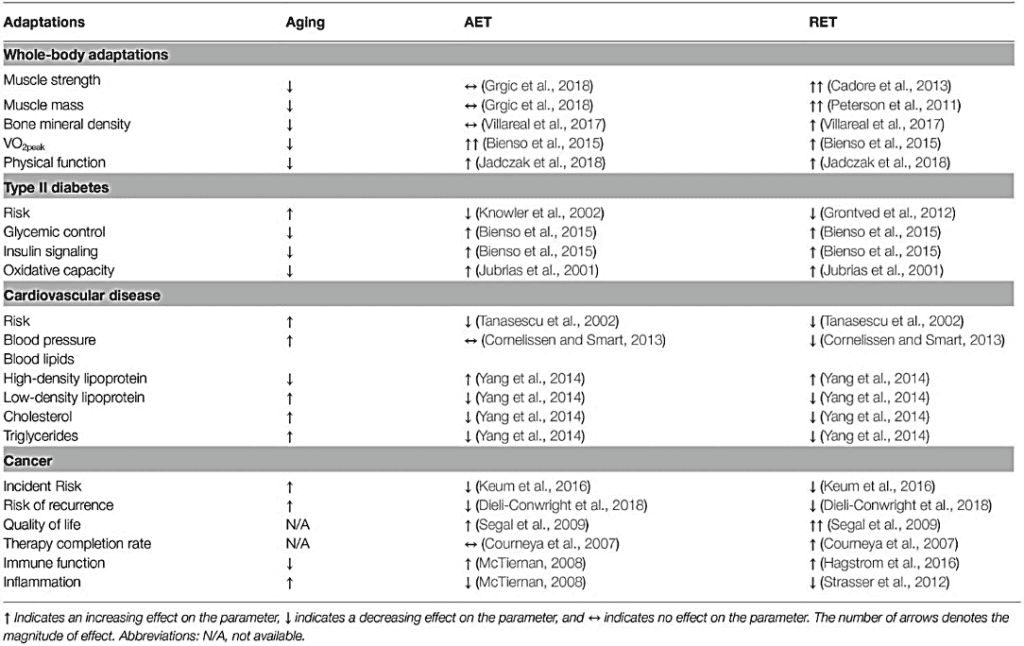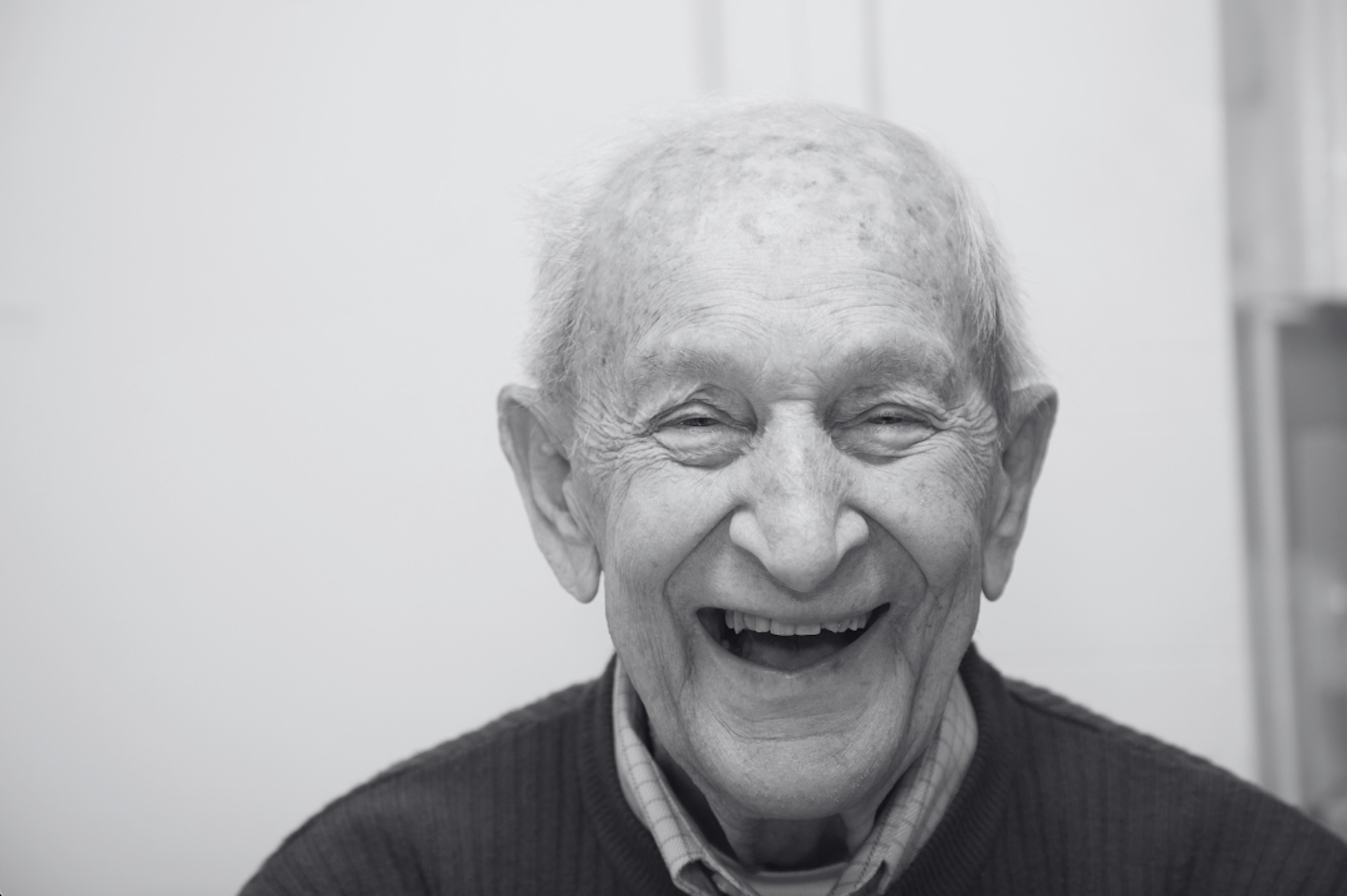Muscle weakness and frailty is associated with higher prevalence of fall, immobility and many chronic medical conditions in the older population. Despite muscle weakness effectively being amended by exercise, especially high intensity strength training, it is common to assume that exercise, particularly strength training is less effective and dangerous as you get older. It is commonly a reason why people do not participate in resistance training at all due to being “too old.” If you believe this, can you remember when or where this belief started? Culturally, why does society continue to not support the elderly to remain active and strong. Fear of injury? Perceived lack of benefit? This is unwise given we have seen the published benefit of high intensity strength training on people older than 90 since the 1990’s.
Evidence suggesting strength training continues to be beneficial for older age individuals is not new science. An article by Fiatarone et al. published in 1990 demonstrated that across an 8-week training study “high-intensity strength training is feasible and is associated with significant gains in strength and muscle growth in individuals up to 96 years of age”. Overall, the participants were not acutely unwell but perhaps could be perceived culturally as being “unsafe” to exercise as they were residents of an age care facility. Of the 10 total participants in the study, 8 had a history of falls and 7 used assistive mobility devices to move around. None had a recent history of acute illness, unstable cardiovascular or uncontrolled medical condition but each participant had an average of 4.5 diagnosed chronic conditions. The most common medical conditions included osteoarthritis, coronary artery disease, osteoporotic fractures (being treated non-surgically) and hypertension. Most participants had micro-nutrient deficiencies recorded throughout the study, assumed due to their food quality.
The training protocol consisted of only 8 weeks of progressive resistance training completed three times a week, with 98.8% attendance achieved. Participants completed 3 sets of 8 repetition of only one exercise; the leg extension. This exercise strengthens the quadriceps, the muscles directly above you knee, which functions to reduce time taken to stand from a chair and to increase gait speed. The intensity was set and then adjusted each week as strength increased to start and stay at 80% of the load of the individual one repetition maximum! No cardiovascular events or need for pain medication after each training session was reported. “Minor” knee and hip discomfort were reported during exercise but did not lead to nonattendance. A minor increase in joint soreness post exercise in the elderly (and younger exercisers) is a common reason to discontinue but is actually a normal and medically acceptable response to exercise and is not an indication that the exercise was done wrong or is dangerous (Skou et al., 2018; Chang et al., 2020).
In this landmark study, participant’s leg strength increased until at 8 weeks, 174% ±31% of original strength was the recorded average. Weight lifting with one leg increased from an average of 7kg to 19kg! Based on this increase and what we know about normal age-related strength losses, it is likely that the participant was then stronger than they had been for many years previously. Responsiveness to training was not different in men vs women. Regional body composition of the thigh determined using computed tomography (CT) scans showed increased quadriceps area by 10.9% ±7.0 and hamstring and adductor area of 8.4% ±3.9% without showing a change in thigh girth (don’t trust your vision for measuring success). Strength gains also did not correlate with these changes in muscle size by CT scan, pointing to the ability to get stronger even without muscle growth. Common functional mobility tests including the timed chair rise test (standing from a chair as quick as possible) and the 6 m walk test all improved. Two subjects no longer used canes to walk at the end of the study and one participant who could not initially rise from a chair without use of the arms became able to do so. None of the participants experienced any falls during the research timeframe. Just like what we see in younger individuals, after 2 and 4 weeks of training cessation changes in muscle function were not maintained. This supports other evidence concluding that improvements in clinical function requires weekly consistency and ongoing consistent exercise participation.
The major takeaway from this study is that a high-intensity weight-training program is capable of inducing dramatic increases in muscle strength in frail men and women up to 96 years of age. Improvement was seen despite advanced age, extremely sedentary habits, multiple chronic diseases and functional disabilities, and nutritional inadequacies. I’ve attached a screenshot from the 1990 paper showing a summary of results prior studies, along with their outcomes, below. Look at the age ranges studied and mean strength increases across all body regions!
Table from Fiatarone et al. 1990

In the THIRTY+ years since this research was published, extensive additional work has continued to validate those findings. Table 2 below from a 2019 review, indicates the wide range of improvements now evidenced. Yet, the cultural norm remains apparently oblivious to the massive improvements in quality of life that such a simple change can bring about. Share this information with all your loved older family and friends. Start the discussion to seek help with this paper in your hands as justification. The decrements in muscle strength or functional movement such as standing from a chair and slowed walking that you might have noticed can be reversed and improved in those in their 9th and 10th decade of life. Worried about the risk of exercise? Concern is ok but be careful of overprotecting due to ageism. We know now that the medical risks of immobility and falls greatly outweigh the potential risks of muscle strengthening interventions in the elderly population. Additionally, low-to-moderate resistance training when performed close to repetition failure in middle and older subjects can still be beneficial as seen in a recent study (Balachandran et al., 2023). Time constraints? Completing one exercise at a high intensity can be beneficial as seen in the described study. No interest in exercise? Make the reason why relate to their goals and interest, such as maintaining independence and participation in their hobbies. Seeking group exercise classes that support people of a similar age can also be helpful. It is common for the elderly to not express optimism and not to accurately predict their response to exercise. Please seek further help from an exercise specialist if barriers to exercise remain for your elderly loved ones, and reap the reward of their improved quality of life.
Written by Tom Murphey, DPT.
“Unfortunately for our community, scientific scaremongering is common, easy to believe and hard to heal. Research is often messy, and strong stances or beliefs can be both erroneous and dishonest. I aim to produce honest reviews of some high-quality research to provide informed insight so you can make up your own mind on the science you value.”

(Abou Sawan et al., 2023- Effects of resistance training on age related physical and cognitive function)

(McLeod et al., 2019) Age-related changes in risk factors for chronic disease and the adaptive responses to aerobic exercise training and resistance exercise training.
References.
Abou Sawan, S., Nunes, E. A., Lim, C., McKendry, J., & Phillips, S. M. (2023). The Health Benefits of Resistance Exercise: Beyond Hypertrophy and Big Weights. Exercise, Sport, and Movement, 1(1), e00001. https://journals.lww.com/acsm-esm/pages/articleviewer.aspx?year=2023&issue=01000&article=00002&type=Fulltext
Balachandran, A. T., Wang, Y., Szabo, F., Watts-Battey, C., Schoenfeld, B. J., Zenko, Z., & Quiles, N. (2023). Comparison of traditional vs. lighter load strength training on fat-free mass, strength, power and affective responses in middle and older-aged adults: A pilot randomized trial. Experimental Gerontology, 178, 112219. https://www.sciencedirect.com/science/article/pii/S0531556523001407
Chang AH, Lee JJ, Chmiel JS, Almagor O, Song J, Sharma L. Association of Long-term Strenuous Physical Activity and Extensive Sitting With Incident Radiographic Knee Osteoarthritis. JAMA Netw Open. 2020 May 1;3(5):e204049. doi: 10.1001/jamanetworkopen.2020.4049. PMID: 32364594; PMCID: PMC7199114. https://pubmed.ncbi.nlm.nih.gov/32364594/
Fiatarone, M. A., Marks, E. C., Ryan, N. D., Meredith, C. N., Lipsitz, L. A., & Evans, W. J. (1990). High-intensity strength training in nonagenarians: effects on skeletal muscle. Jama, 263(22), 3029-3034. https://jamanetwork.com/journals/jama/article-abstract/382128
Mcleod, J. C., Stokes, T., & Phillips, S. M. (2019). Resistance exercise training as a primary countermeasure to age-related chronic disease. Frontiers in Physiology, 10, 645. https://pubmed.ncbi.nlm.nih.gov/31244666/
Skou, S. T., Pedersen, B. K., Abbott, J. H., Patterson, B., & Barton, C. (2018). Physical activity and exercise therapy benefit more than just symptoms and impairments in people with hip and knee osteoarthritis. Journal of orthopaedic & sports physical therapy, 48(6), 439-447. https://www.jospt.org/doi/full/10.2519/jospt.2018.7877?src=recsys
Further information
How to Dose Strength Training for Older Adults https://www.physio-network.com/blog/dose-strength-training-older-adults/?fbclid=IwAR2p9xP34jQHN5kH13Ner6Z6LLscboPqc8bim5kDGJEjotk8tEff6X_v_Vk
How Old Is Too Old to Start Strength Training? https://www.medscape.com/viewarticle/990794?ecd=wnl_tp10_daily_230425_MSCPEDIT_etid5371240&uac=285552CJ&impID=5371240#vp_3
The Best Tips for Strength Training in the Elderly!- https://www.youtube.com/watch?v=h2KGe11oyEI&t=1s&ab_channel=ClinicalPhysio
Special Considerations For Training Older Lifters (Including Joint Replacements) – https://www.youtube.com/watch?v=9KiYqmh893E&ab_channel=BarbellMedicine
Progressive Resistance Training for the Older Adult –

Comments:
share